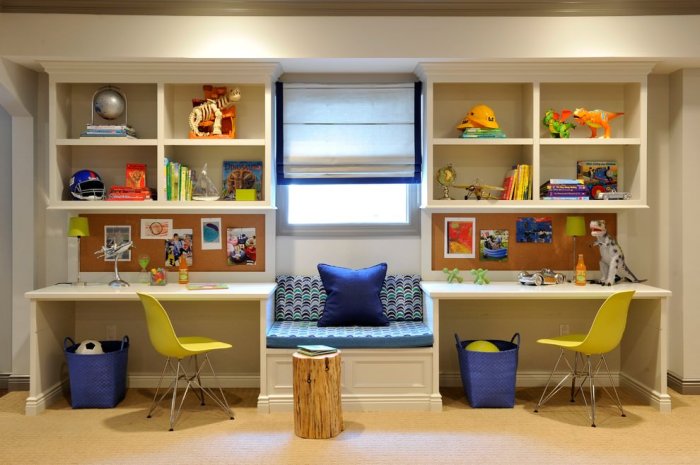How to decorate kids study room – Decorating a kid’s study room is more than just adding colors and furniture. It’s about creating a space where children can feel inspired, motivated, and focused on their studies. A well-decorated study room can make a huge difference in a child’s academic performance and overall well-being.
Choose the Right Colors
Colors can have a significant impact on a child’s mood and productivity. Opt for calming colors like blue or green for a study room to promote focus and concentration.
Add Personal Touches
Include your child’s favorite books, toys, or artwork in the study room to make it feel like their own special space.
When it comes to creating a 4 seasons room, the key is to blend functionality with style. To decorate a 4 seasons room effectively, consider using versatile furniture pieces that can easily transition between seasons. Incorporate elements like cozy throws and pillows for winter, bright colors and plants for spring, light and airy fabrics for summer, and warm tones and candles for fall.
Check out this helpful guide on how to decorate a 4 seasons room for more inspiration!
Provide Proper Lighting
Natural light is essential for studying, so make sure to place the study desk near a window. Additionally, add task lighting like a desk lamp for focused work.
Are you looking to create a versatile space that can be enjoyed in all four seasons? Check out this guide on how to decorate a 4 seasons room for tips and inspiration. With the right decor and design elements, you can transform your room into a cozy retreat no matter the weather outside. Embrace nature-inspired colors and textures, incorporate indoor plants, and choose furniture that can easily transition from summer to winter.
Let your creativity shine and make the most of your four seasons room!
Organize the Space
Keep the study room clutter-free by providing ample storage solutions like shelves, baskets, and bins. A tidy space can help children stay organized and focused.
Create a Comfortable Study Area
Invest in a comfortable chair and desk that are the right height for your child. A cozy study area can make studying more enjoyable and productive.
Encourage Creativity
Add a creativity corner with art supplies, a chalkboard wall, or a whiteboard for your child to express themselves and think outside the box.
Include Inspirational Decor
Hang motivational posters, inspirational quotes, or a vision board to encourage your child to set goals and stay motivated in their studies.
Design a Homework Station

Create a designated homework station with all the necessary supplies like pencils, erasers, rulers, and calculators. Having everything within reach can make homework time more efficient.
Make it Fun and Functional
Balance functionality with fun elements like bean bags, floor cushions, or a reading nook to make the study room a space where your child enjoys spending time.
Conclusion

Decorating a kid’s study room is a thoughtful process that involves creating a space that is conducive to learning, creativity, and productivity. By incorporating the right colors, personal touches, proper lighting, organization, comfort, creativity, inspiration, and functionality, you can design a study room that helps your child thrive academically and emotionally.
FAQs: How To Decorate Kids Study Room
1. How can I make a small study room feel more spacious?
Consider using light colors, mirrors, and multifunctional furniture to create the illusion of more space.
2. What are some budget-friendly ways to decorate a kids study room?
DIY projects, thrift store finds, and repurposing existing furniture can help you decorate on a budget.
3. How can I involve my child in the decorating process?
Ask for their input on color choices, furniture placement, and decor items to make the study room feel like their own.
4. What role does organization play in a study room?
Organization is crucial for maintaining a productive study environment and helping children stay focused on their tasks.
5. How often should I update the decor in a kid’s study room?
Consider updating the decor every few years to reflect your child’s evolving interests, hobbies, and academic needs.
